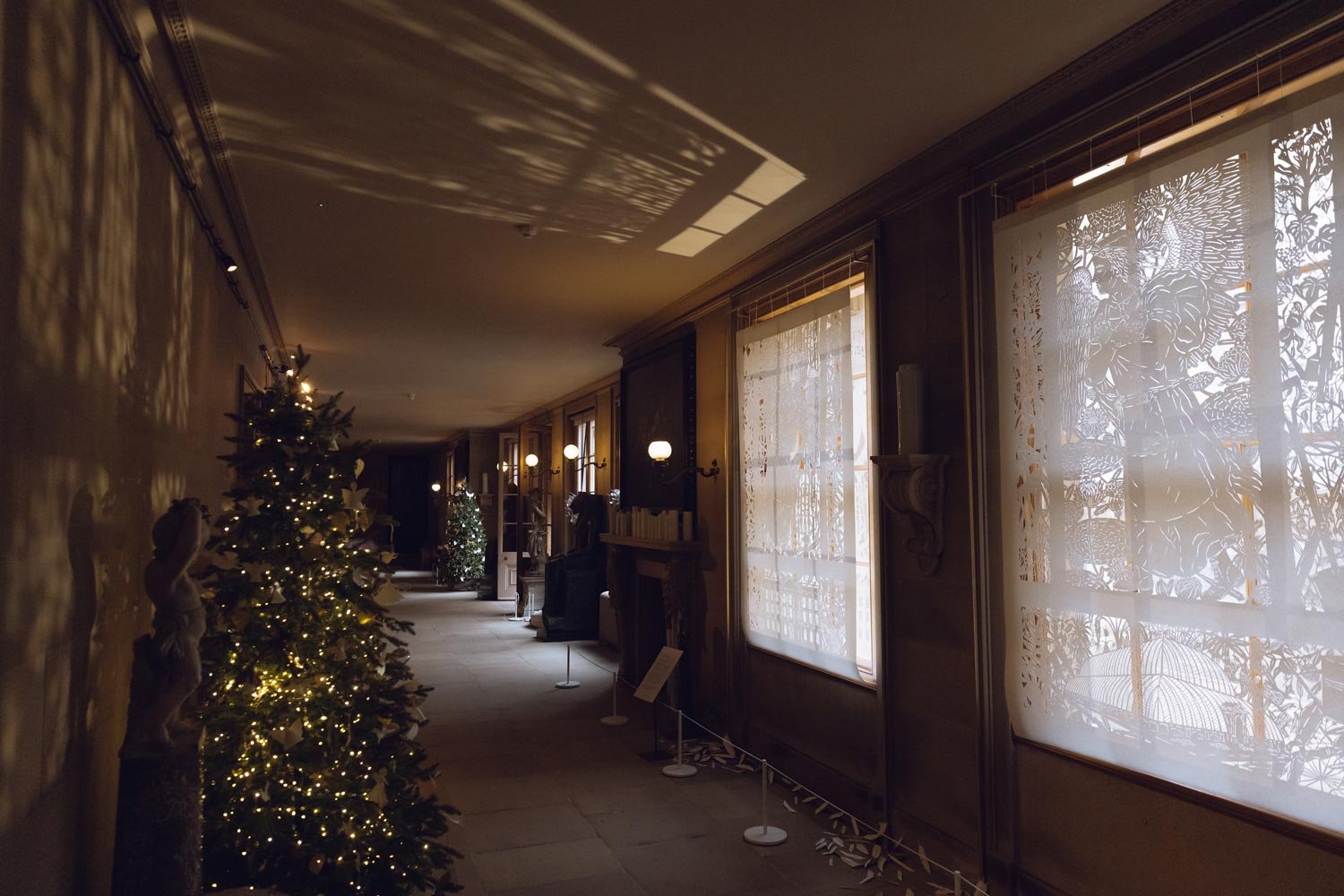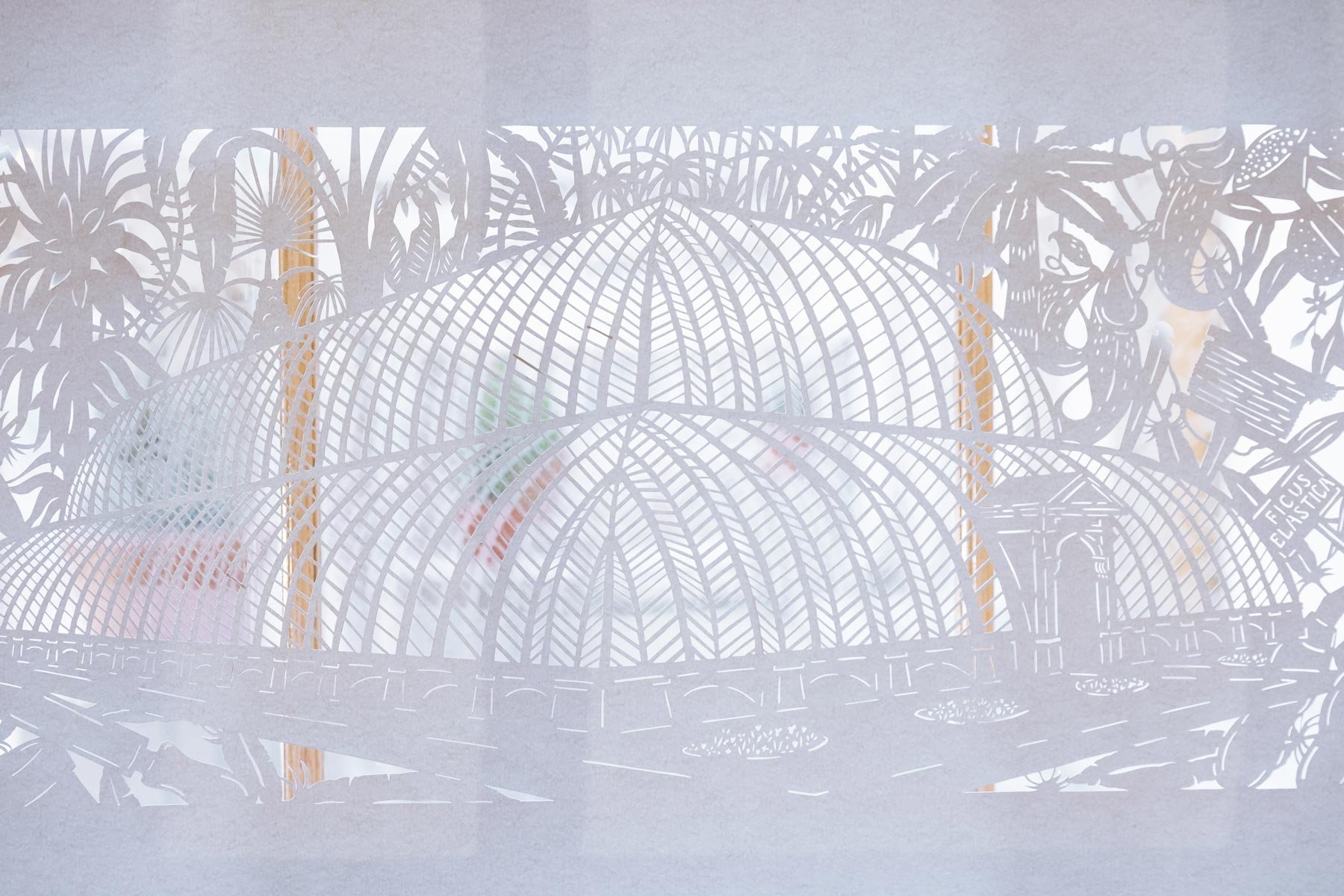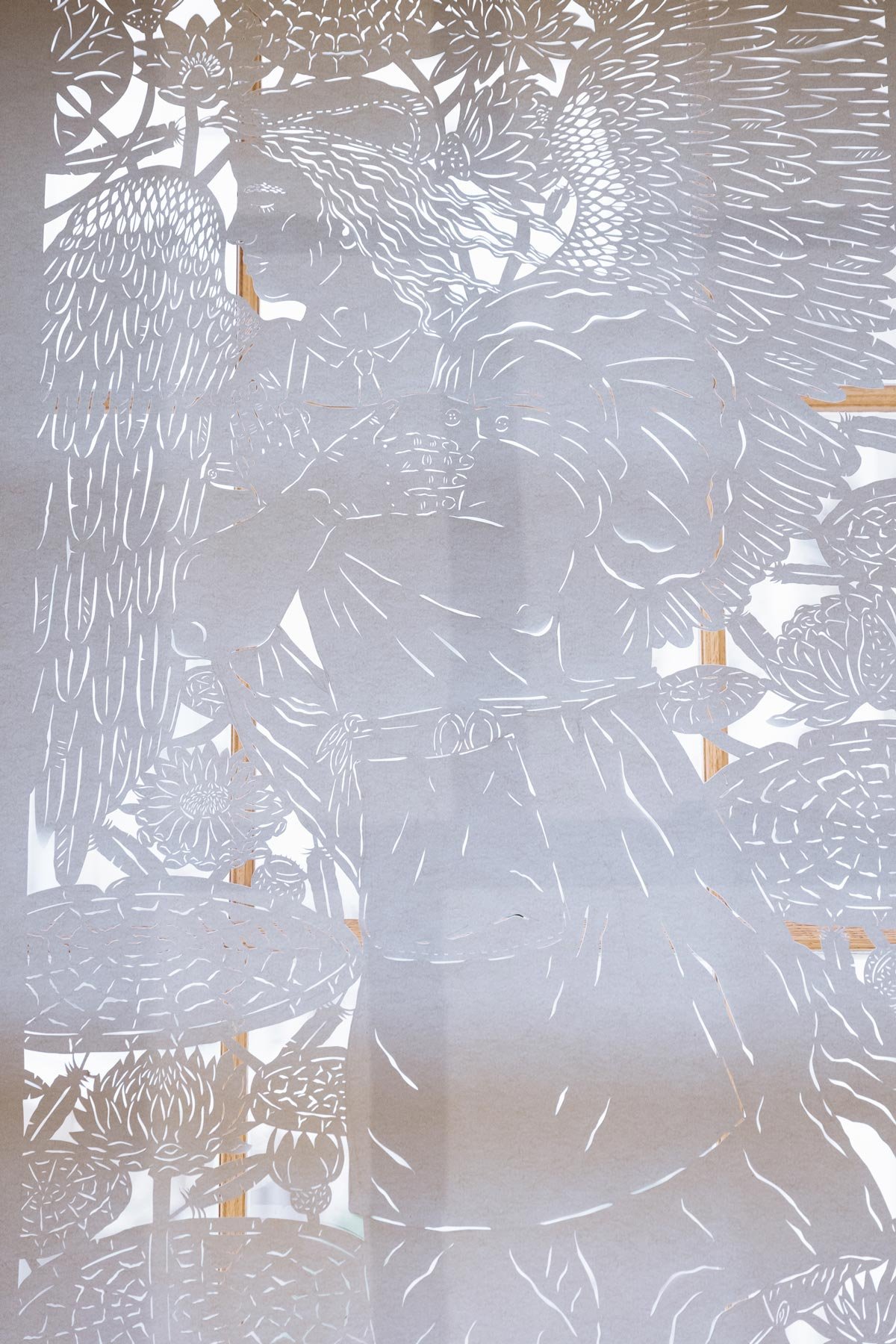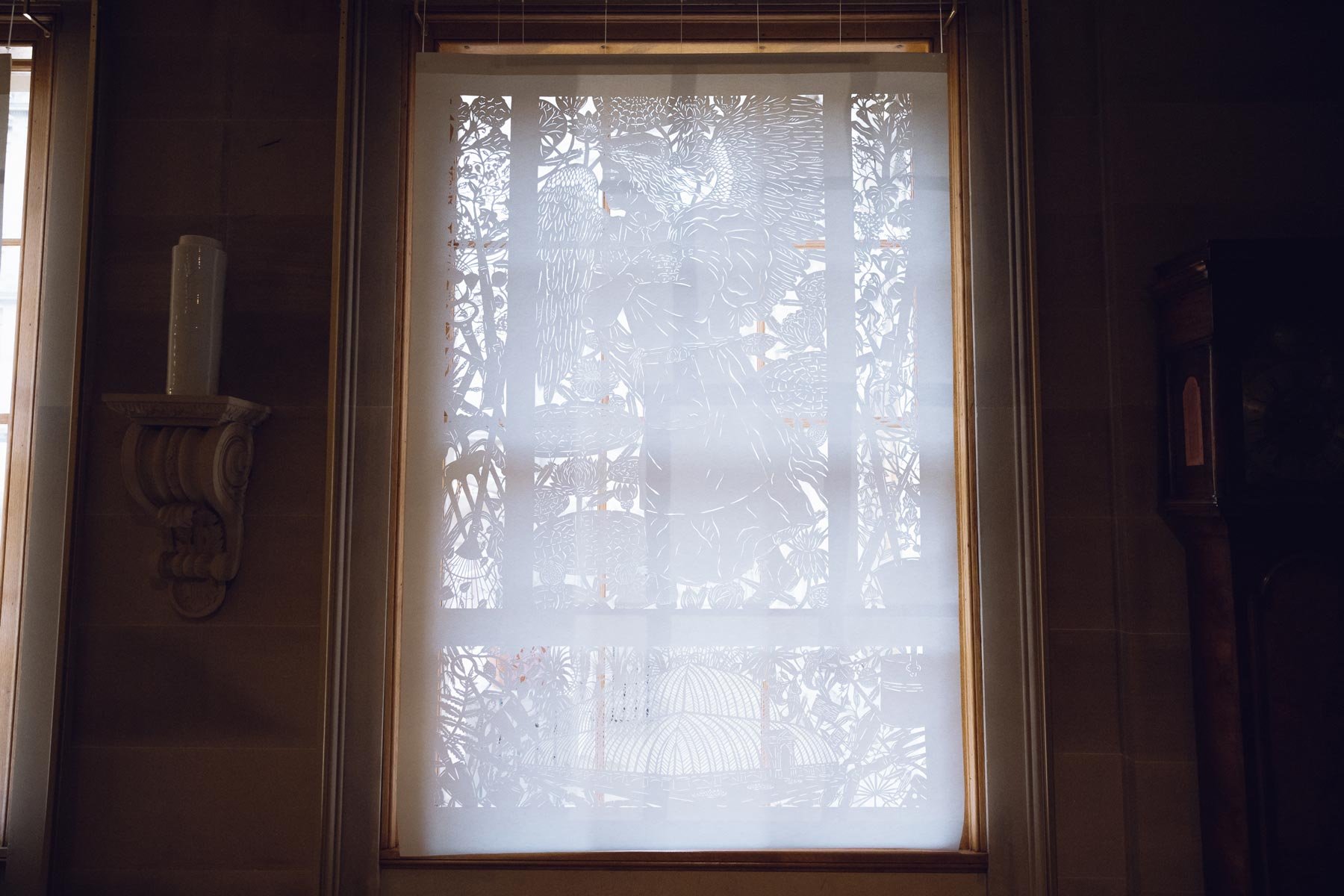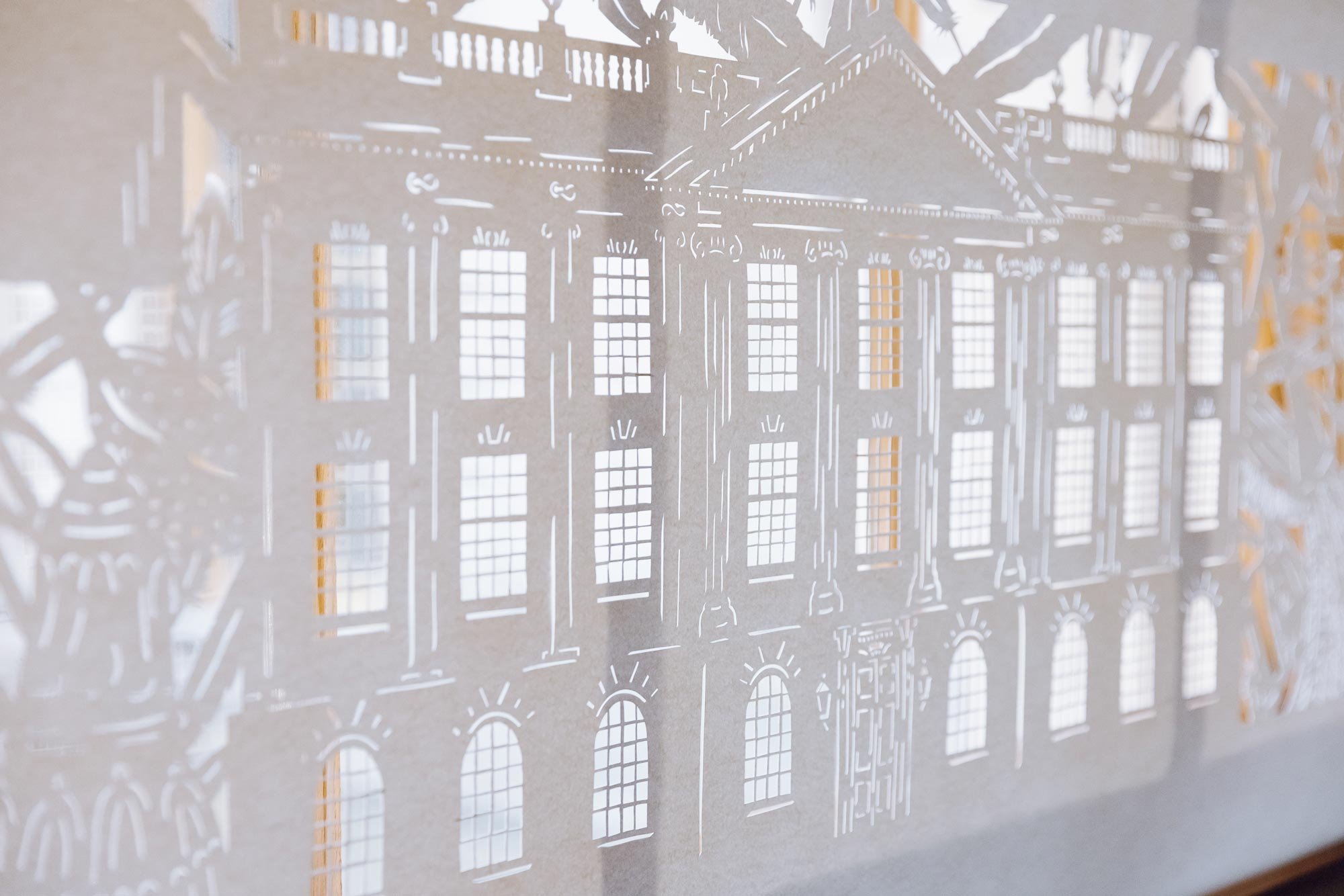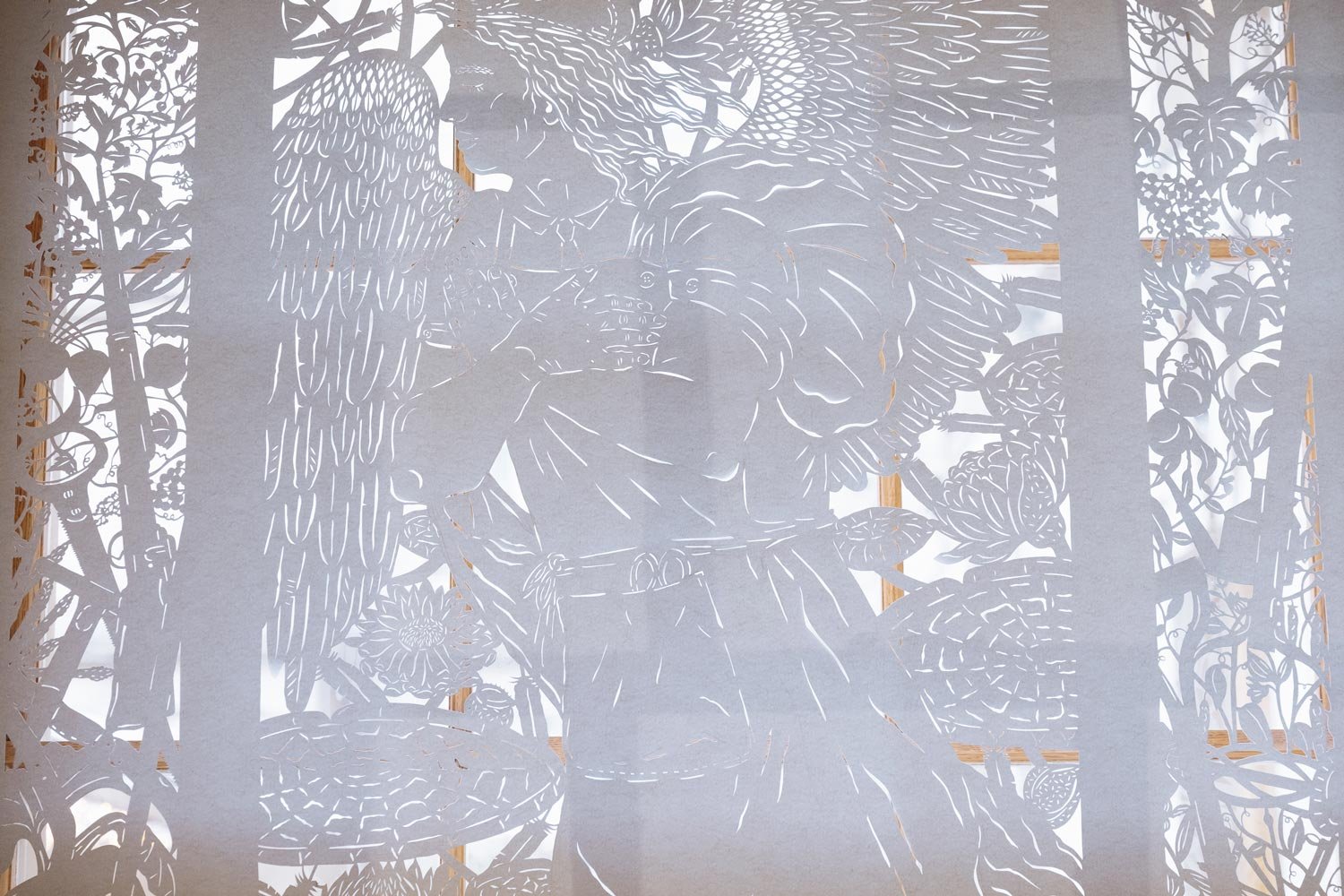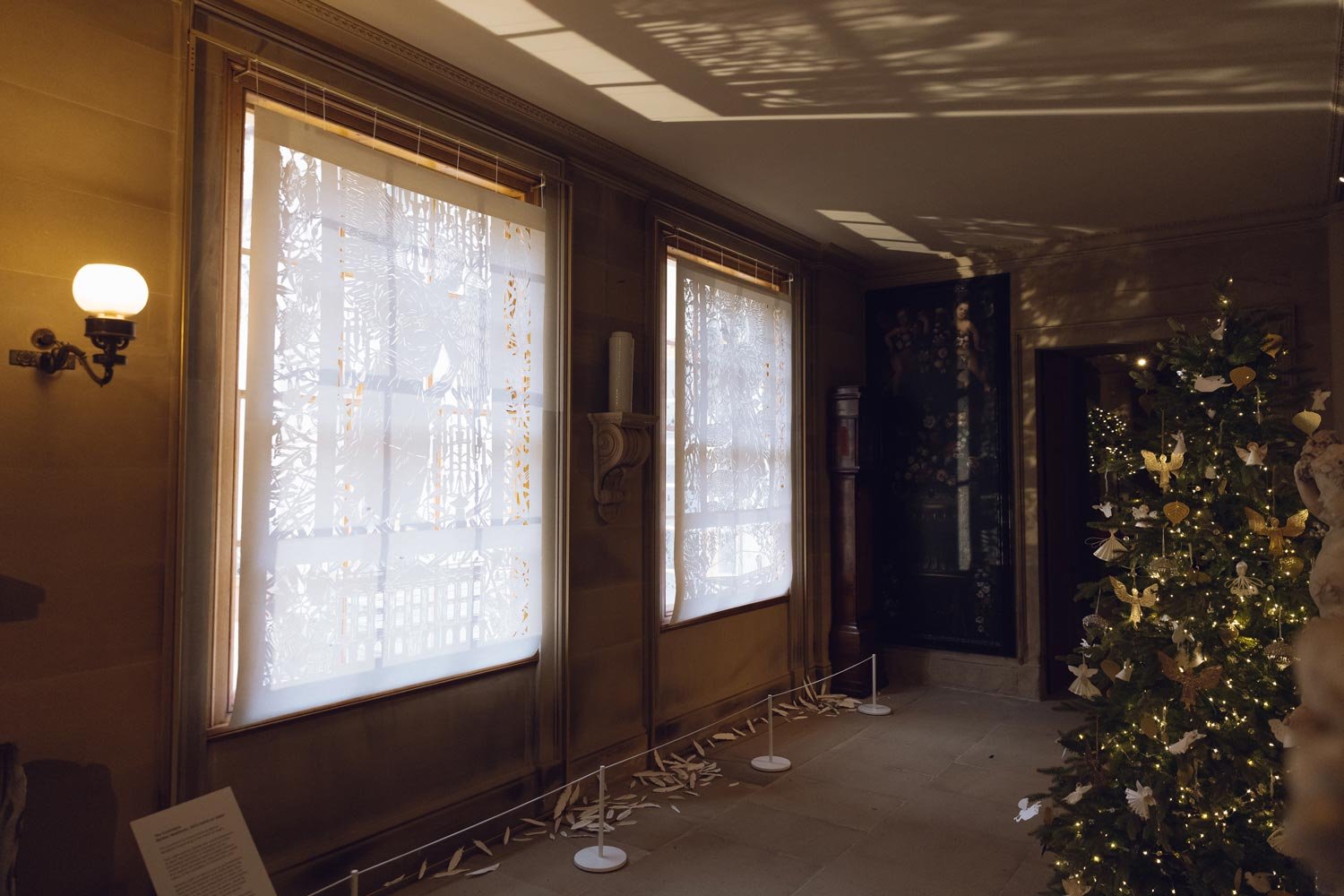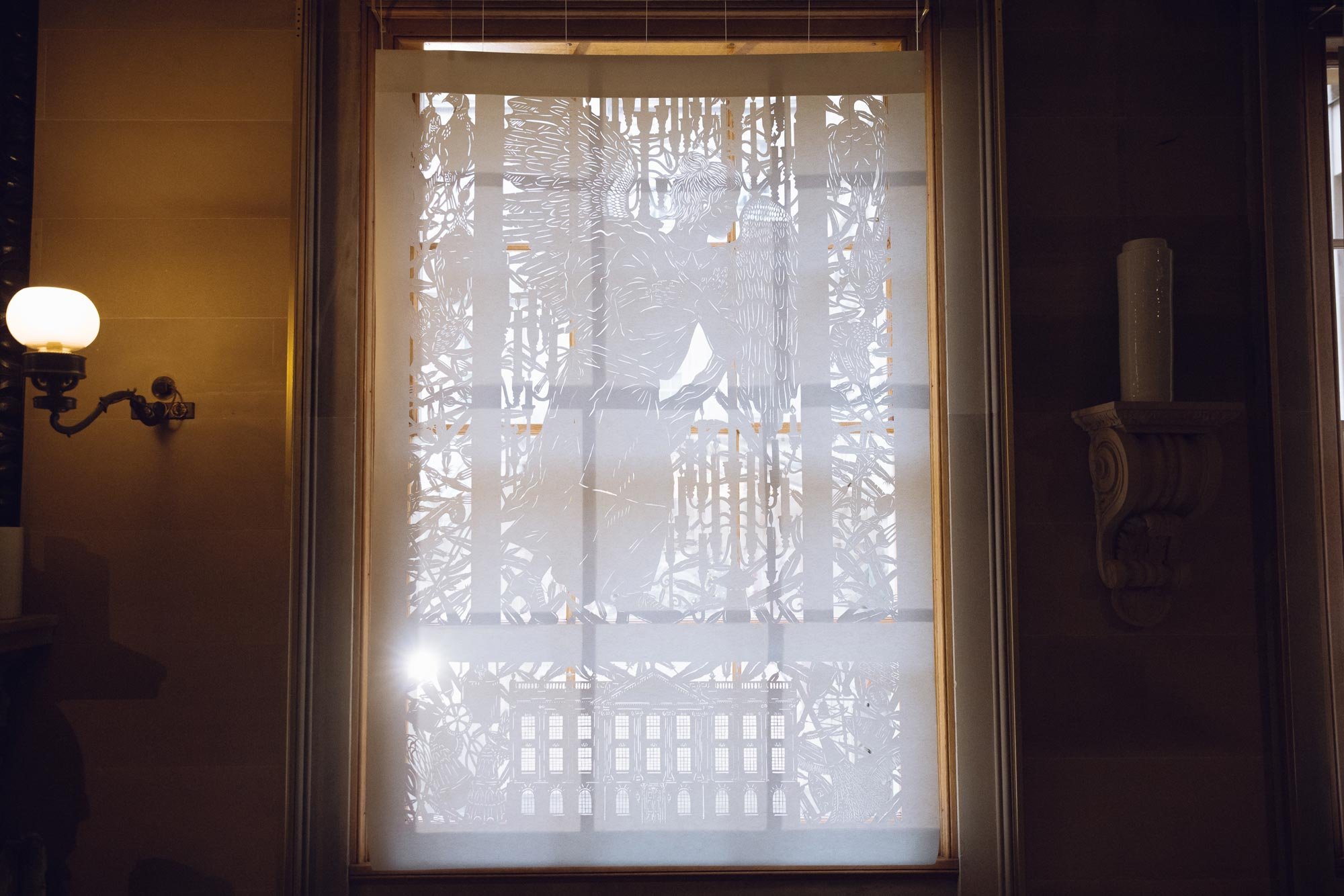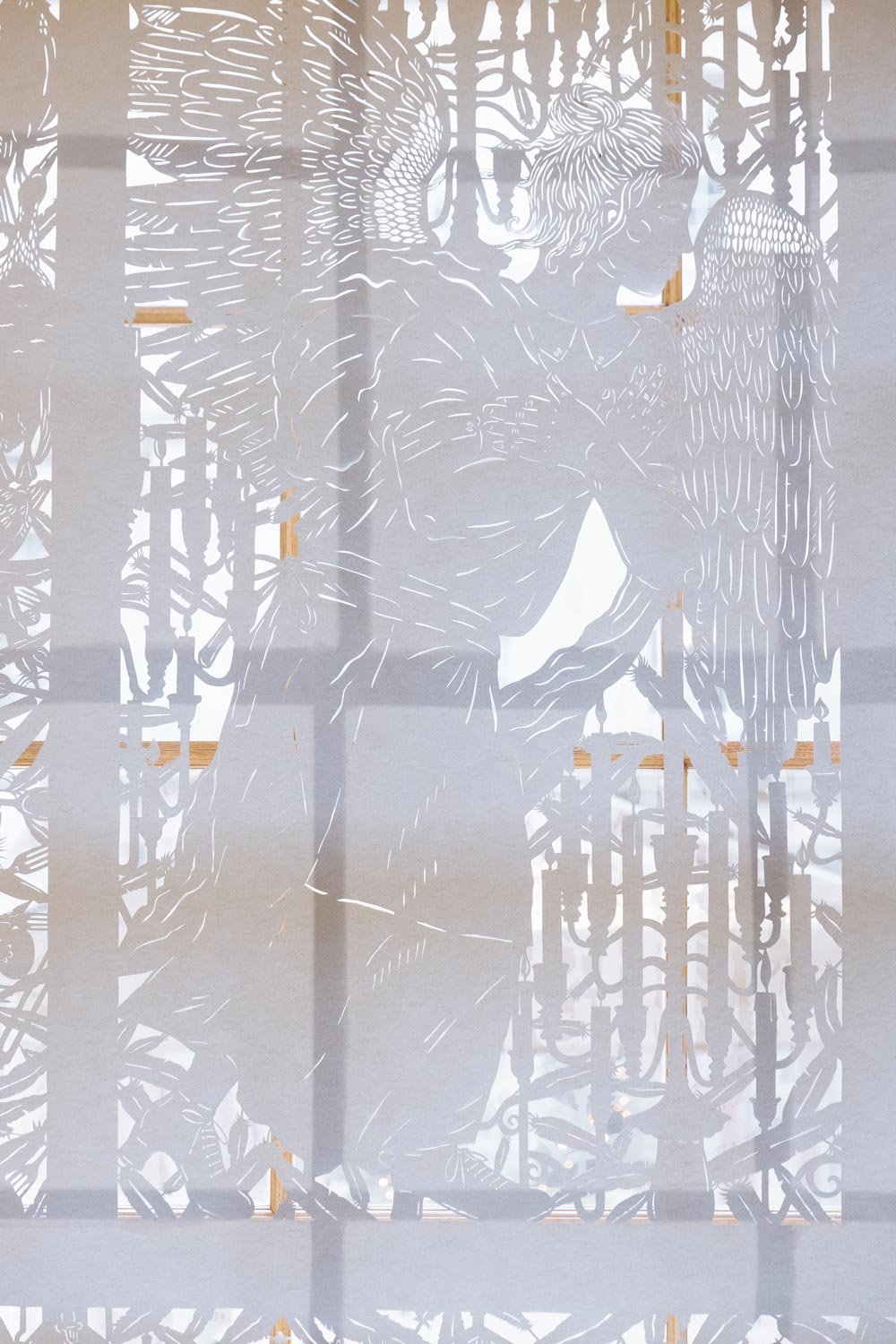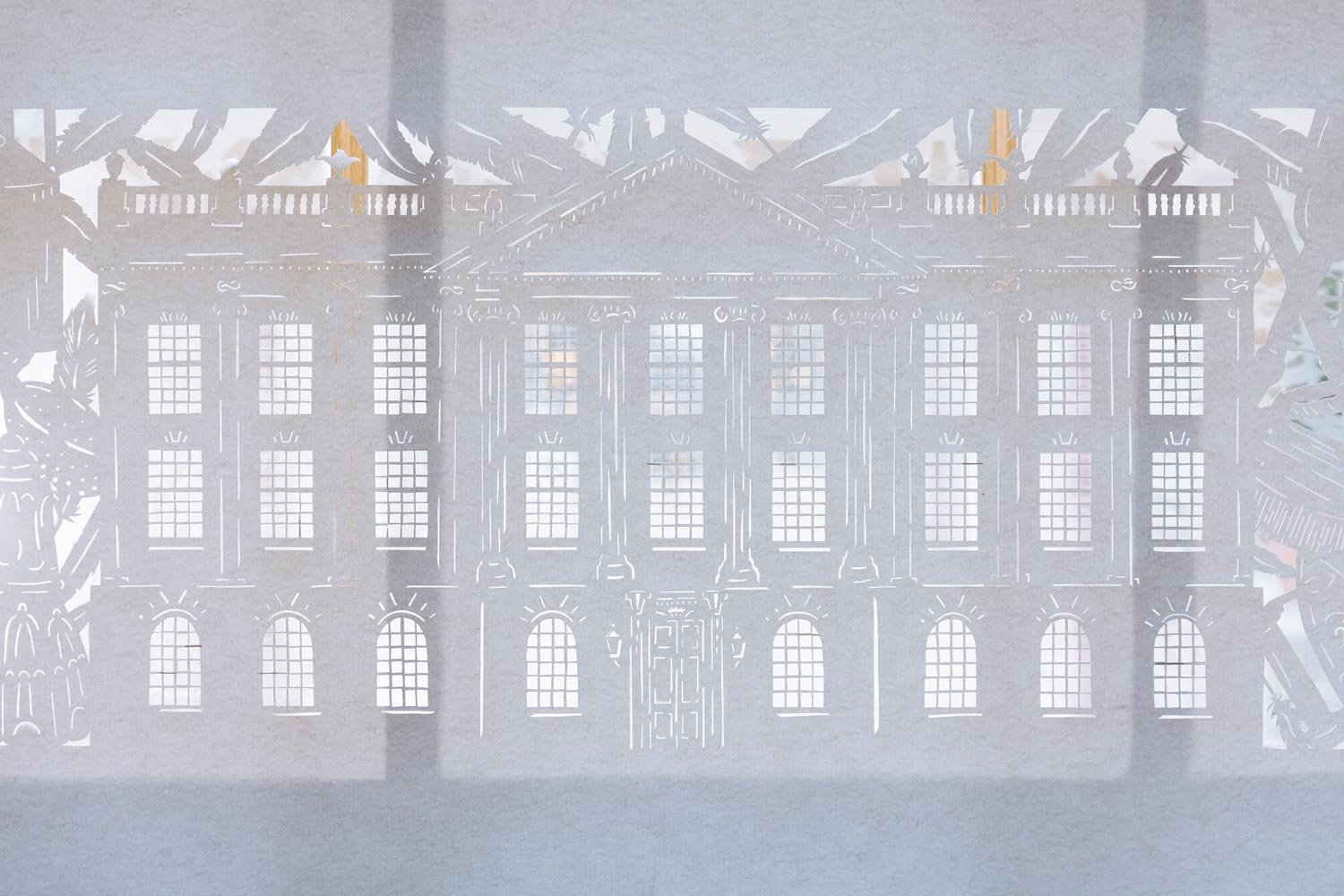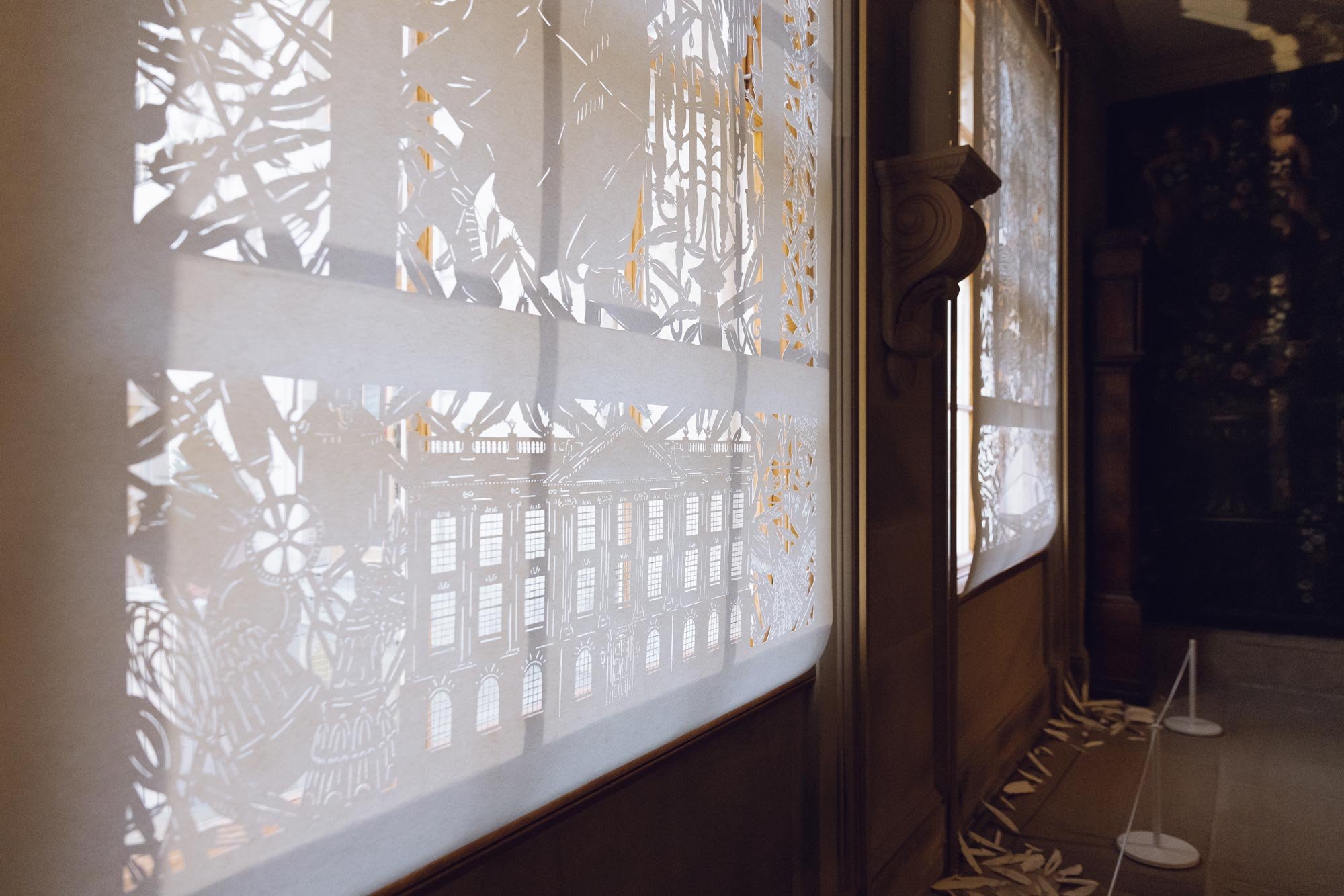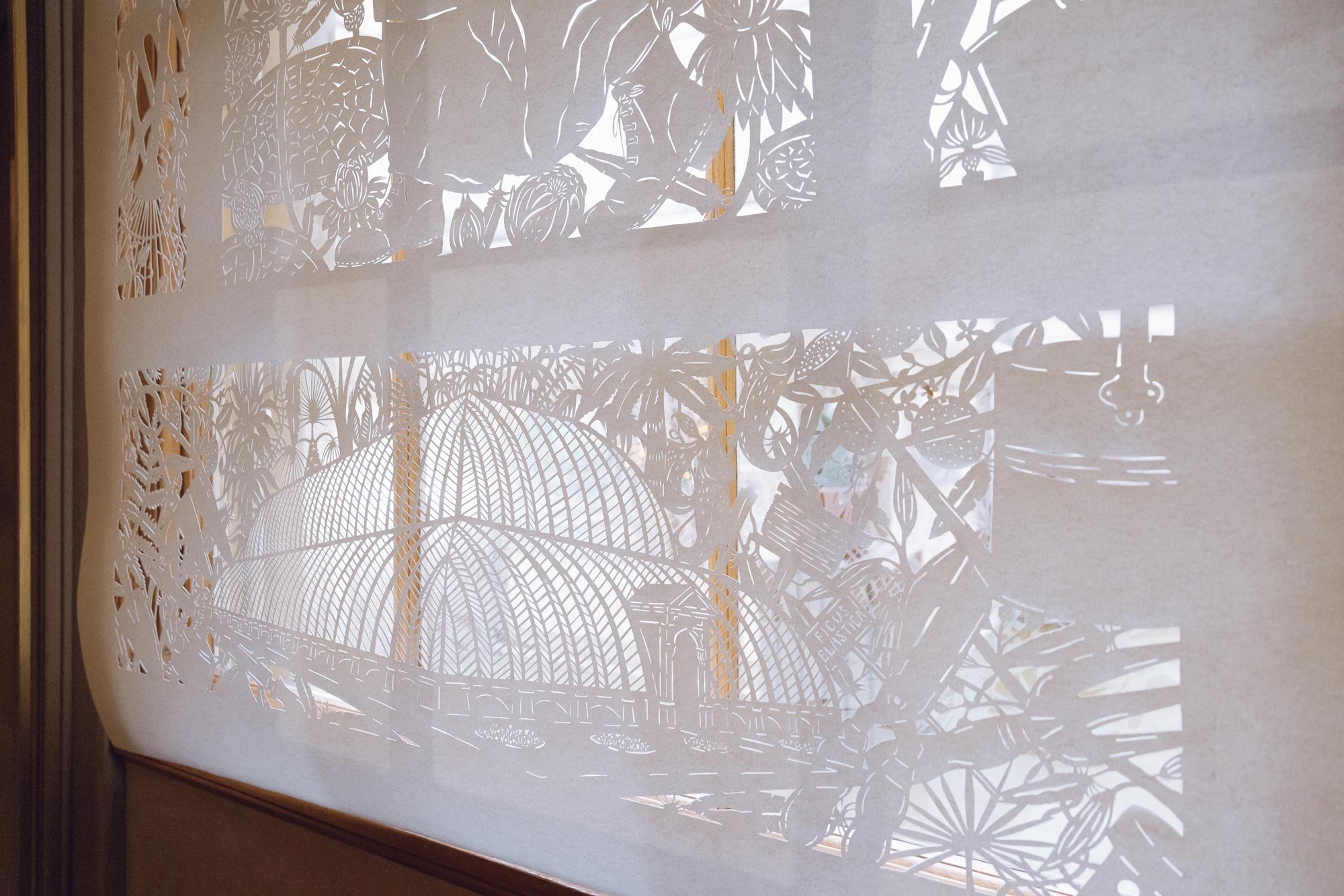
The Caretakers
_
Chatsworth House, 2023
Commissioned for Christmas at Chatsworth: Palace of Advent, The Caretakers was installed in the Chapel Corridor and responded to the historic houses’ art collection whilst simultaneously telling untold stories of the workers from the Estate; Chatsworth's caretakers.
Developed over eight months, I spent time visiting Chatsworth, delving into the archive and exploring artwork in the Devonshire Collections to gain inspiration for the two intricately designed papercut artworks that mirror ‘The Annunciation’ by Titian. Shining a light on figures such as gardeners, groundsmen, housekeepers and cooks, I used archival material including receipts, diary entries, letters and photographs to inform the work, and used photographs to change the angelic robes into historic work uniform, the costumes referenceing real shoes, aprons and clothes and tools workers would have worn and used.
"Deep diving into the archives with the collections team, I wanted to find stories of the historic worker. Although many workers' names weren’t recorded, only written in the ledgers as ‘day labourers’, I was able to tell their stories through the receipts for tools they would have used for their jobs. I wanted to allude to the changing face of the workers, such as women starting work in the garden during World War I as the male workforce went to war. Items such as World War I rifles can be found...in the decorative borders of the artwork, and tomatoes can be seen growing from the rifles – these are the plants Chatsworth House began to grow and sell at market as part of their war effort."
Christmas visitors were able to explore the artwork and seek out vulture feather dusters, found in an early 20th-century sales catalogue in the archive; radishes, peaches and rhubarb, as indicated in seed merchant receipts from 1883; or the historic glasshouse in the garden, cut to replicate a staff photograph taken in 1895.
I was drawn to the story of individuals such as Ada Booth who worked in the house and kitchens in the 1920s. The diversity of Ada’s role were cut into the single sheet of paper - a milk caddy can be seen at the top left of the paper-cut house, brushes and dusters to the right of the house and the plucking shears depicted around the birds. I wanted to reference the hard labour of plucking game for a feast that was reserved only for the gentry, and the birds falling feathers offer a connection to the theme of angels and service via this unseen labour.
"Whilst cutting the windows, cutlery and candlesticks in ‘The Caretakers’ I thought of the busy hands who would have polished and cleaned all these beautifully decorative objects, all the while having to use different corridors and staircases so that their work was kept out of sight. The work aims to elevate the important, yet oft unseen, labour of the working classes and also connects to contemporary celebrations at this time of year, where even in everyday houses there is so much hidden work, often by women; tidying the house, preparing birds and feasts, wrapping presents, and caring for others."
You can read more about the work here and explore more of the research process here
